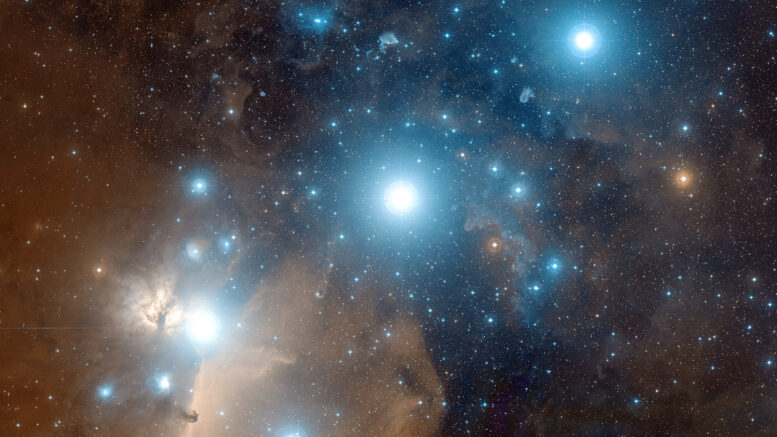Orion’s Belt is one of the most familiar asterisms in the night sky, along with the Big Dipper and the Southern Cross.
It is formed by three massive, bright stars located in our galaxy, in the direction of the constellation Orion: Alnilam, Alnitak and Mintaka. Alnitak is a triple star system that is situated in the eastern end of Orion’s belt. The star is 1.260 light-years away from Earth. Alnilam is a supergiant at around 2.000 light-years away from Earth, located in the middle of the belt. Mintaka is a multiple star system at around 1.200 light-years away from Earth. It is 190.000 times more luminous than the Sun. It is located at the western end of Orion’s belt. [1]
Orion’s Belt is easy to find in the night sky as it is located on the celestial equator and part of one of the most prominent stellar patterns in the northern sky, the hourglass-shaped constellation Orion. The asterism and the constellation are visible in northern latitudes from November to February. The best time of year to observe the asterism is in January around 9 PM.
Finding Orion’s Belt is the easiest way to locate Orion constellation, one of the best known constellations in the sky, which carries great significance across many different cultures.
It is a very popular amateur astronomy astrophotography target with many different blogs providing great tutorials with advice with how to photograph this asterism. Whether using a DSLR and a tracking mount or a CMOS camera with a Telescope, the Orion’s Belt asterism is a sight to see.
https://astrobackyard.com/orion-nebula/
Sources And Further Reading
[1] = https://nineplanets.org/orions-belt/
To view information like this about other asterisms, check out the Asterisms category for more articles.

Be the first to comment on "Orion’s Belt Asterism"